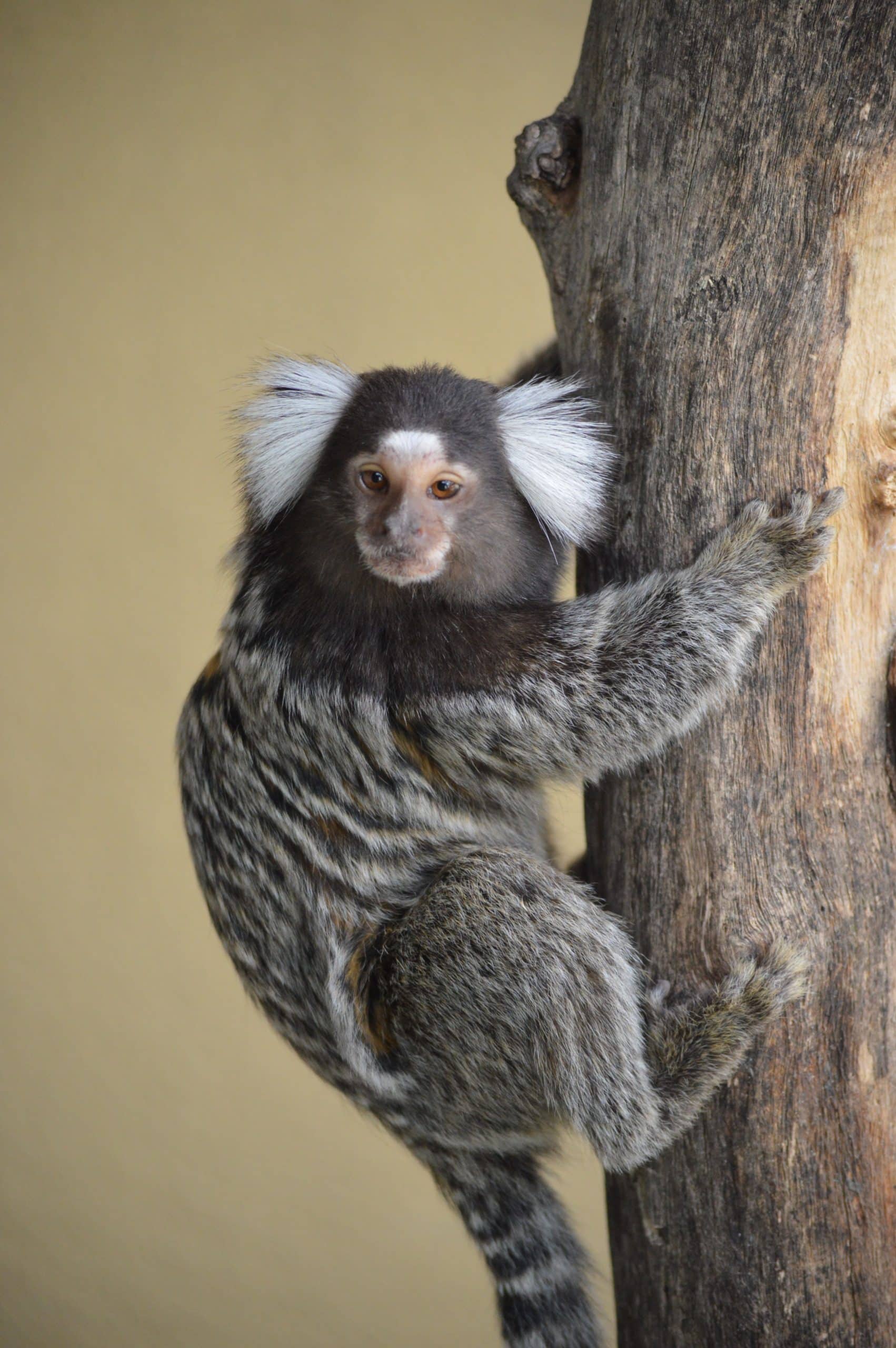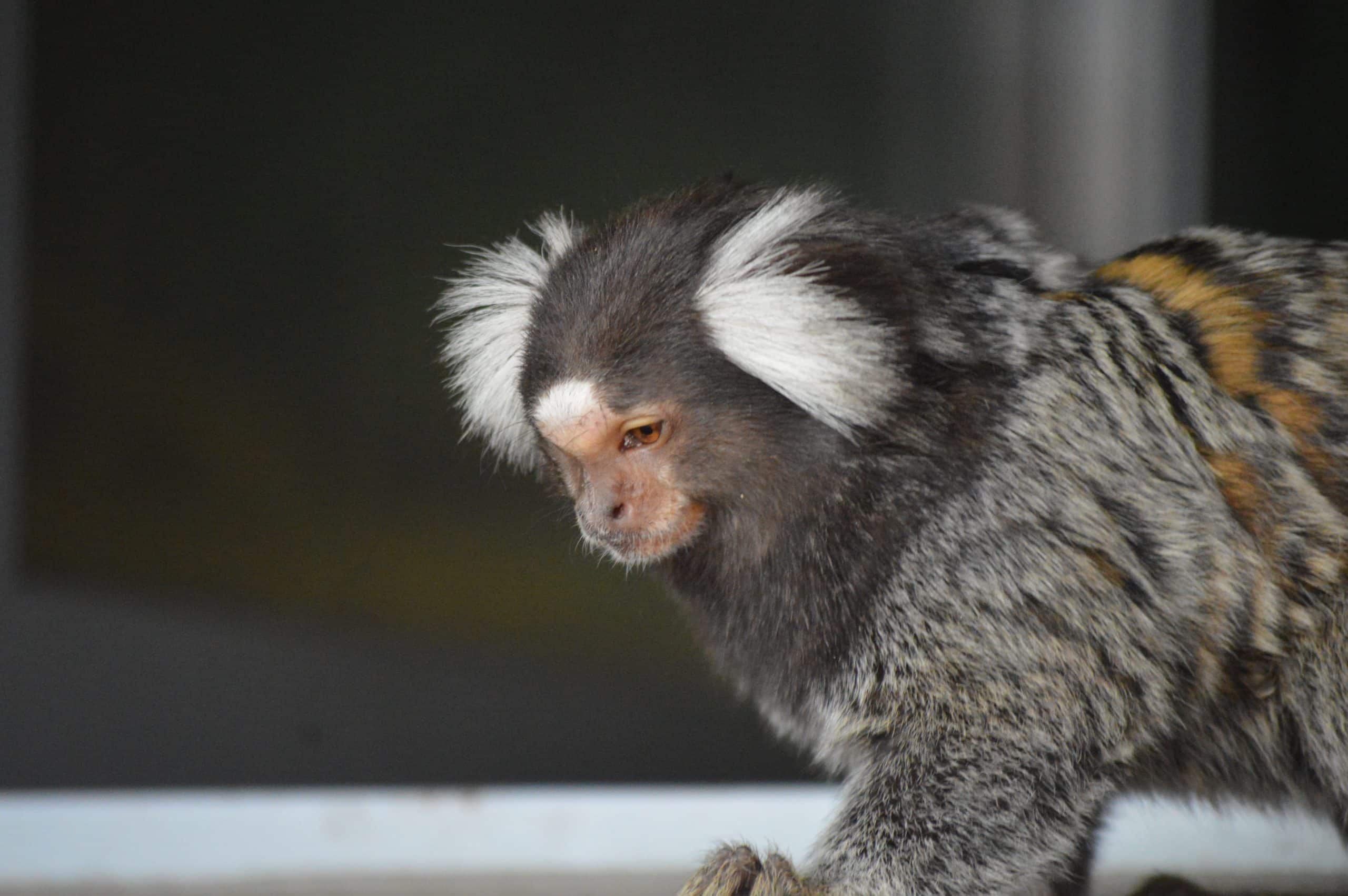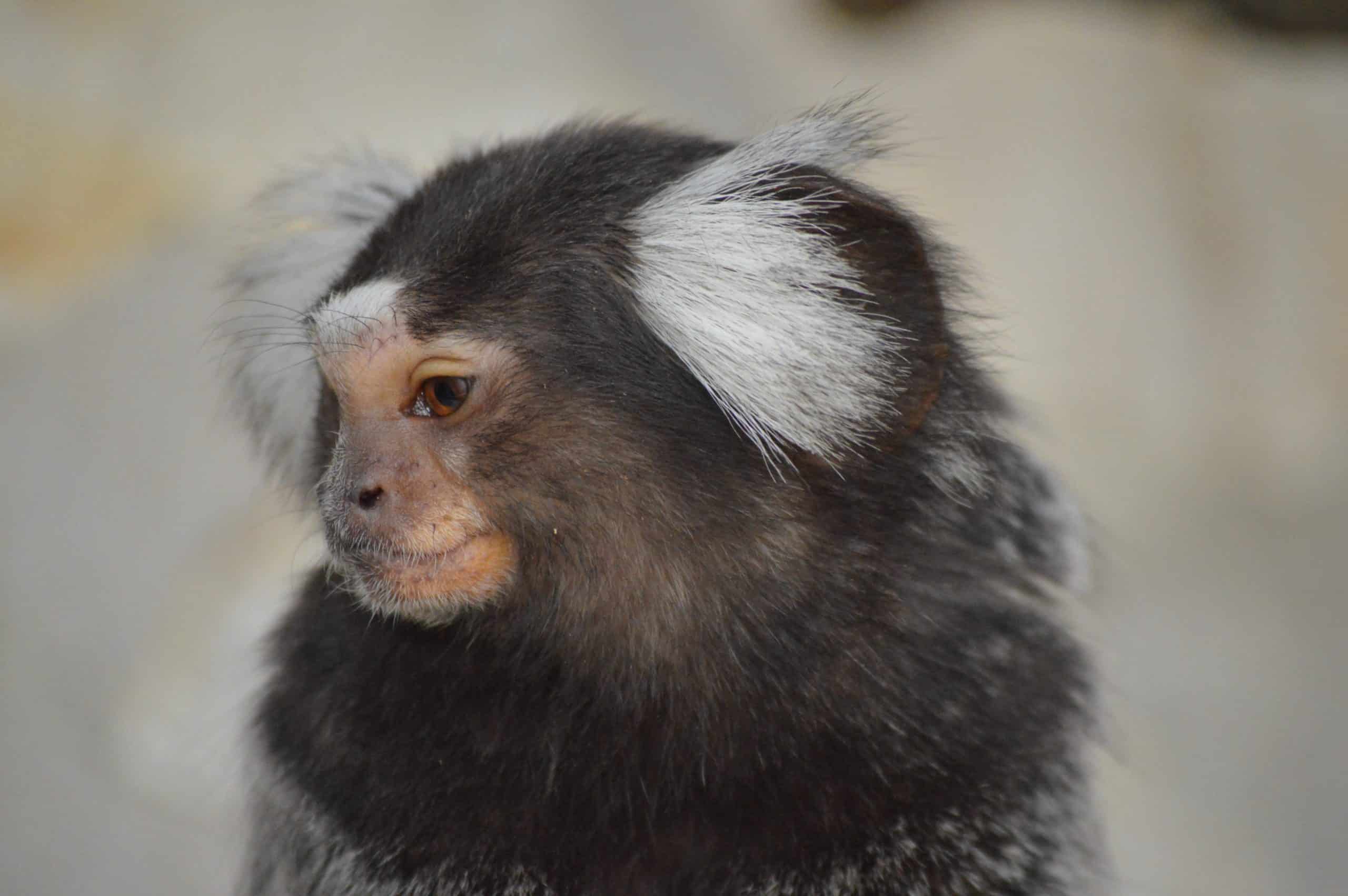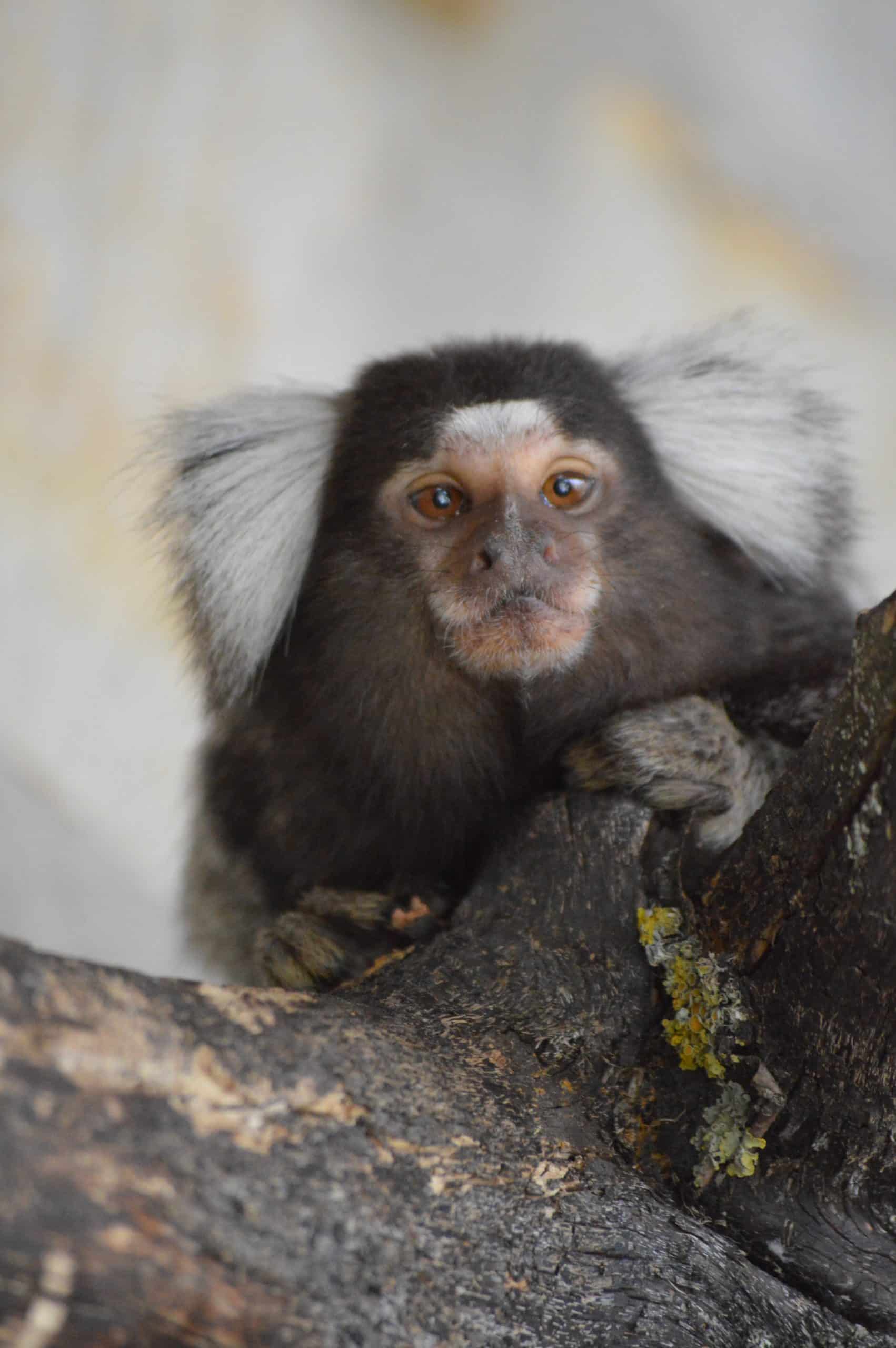Common marmosets are very small monkeys with a long tail. The coat of the marmoset is multicoloured, sprinkled with brown, grey, and yellow. It also has white ear tufts, and the tail is banded. Its face has black skin in the nose area and a white bald spot on its forehead. The coat of the young is brown and yellow, the ear tuft develops later. They have claw-like nails on most of their fingers, which provide the marmosets with squirrel-like movement through the tree. They can hang vertically on trees and jump between them or race through the branches.
Marmosets live in stable extended families, with only a few members allowed to breed. A group can have up to 15 members, but the more common number is 9. The group is composed of the main couple and their relatives. If a member of the dominant pair dies, the group usually breaks up.
Marmosets commonly give birth to non-identical twins. The young instinctively cling to their mother’s back and for the first two weeks will not let go voluntarily. They then become very active and explore their environment. The young are cared for by the whole group. The young are weaned at three months.
Despite declining populations in the wild, the common marmoset is highly adaptable and is outcompeting other marmosets.
At the age of five months, the young enter the juvenile stage. They have more interactions with other family members than their parents. The game helps determine their future status.
Males do not mate with closely related females and leave the group when they reach physical maturity (not sexual maturity, as in other primate species).










